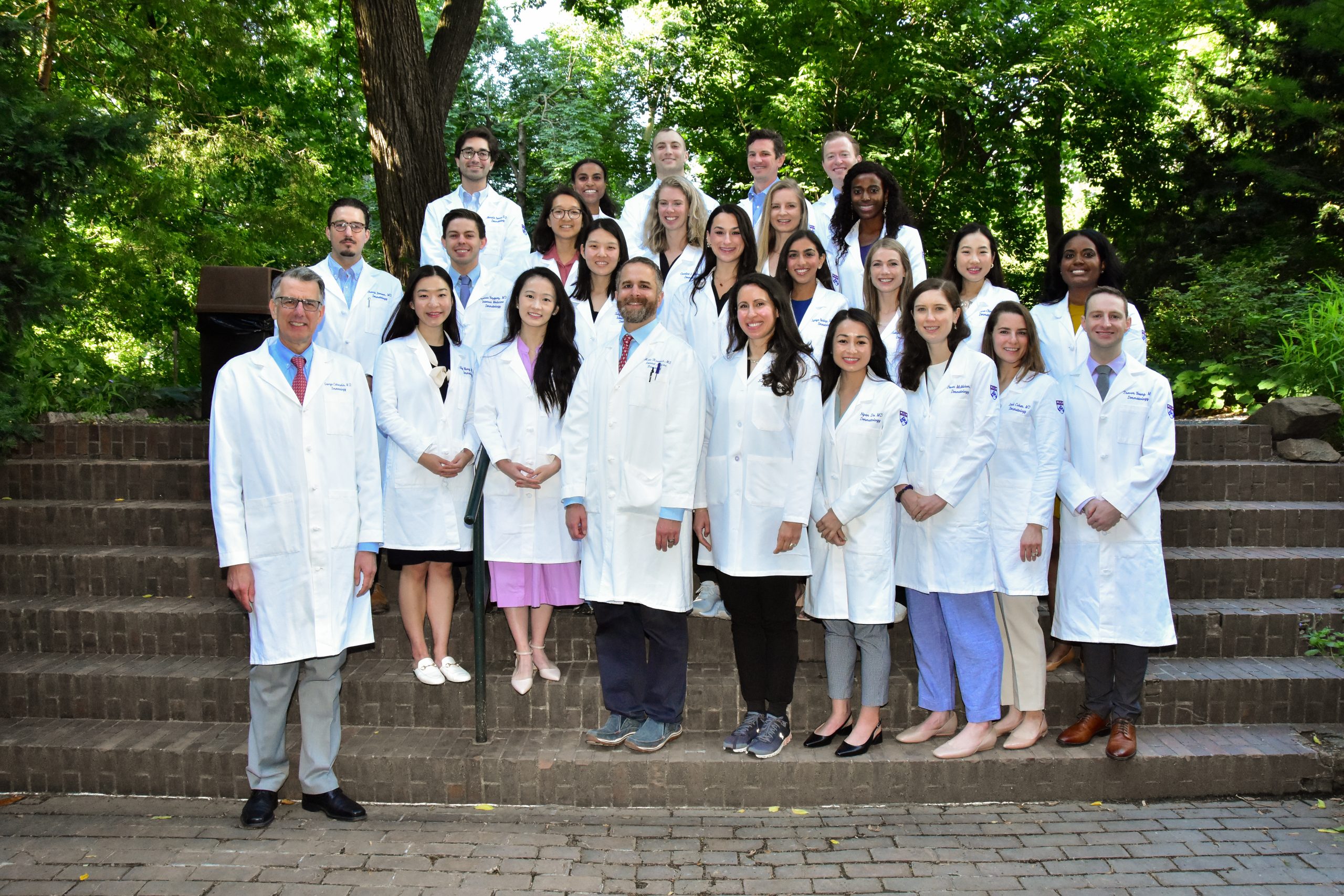 */
*/

Mission
-
Our mission is to educate and train future leaders in the field of dermatology. We aim to foster and support excellence in clinical care of patients from all walks of life and diverse backgrounds; promote life-long learning and advance education and teaching across the field; and introduce and involve residents in cutting-edge basic and translational research. Our residents are engaged, productive members of the local, state, and national dermatology and medical community.
Program Aims
-
Our program places great importance on the following:
- To recruit a diverse array of the highest caliber medical graduates from a variety of backgrounds
- To encourage critical thinking based on medical and scientific data and provide evidence based care
- To equip trainees with educational tools and a passion for self-directed learning, and build a culture of lifelong learning and improvement
- To foster an environment that encourages initiation of, participation in, and completion of innovative, impactful scholarly projects
- To involve residents as members and leaders in quality and safety projects leading to improvements in patient care, clinical practice, and outcomes
- To emphasize diversity and inclusion while highlighting existing health disparities for our underserved patients and communities, both locally and abroad
- To support each individual trainee’s interests and focus, and tailor each resident’s educational experience to support their particular goals and needs through mentorship, electives, and customized clinical experiences
Under-represented in Medicine (URM) refers to individuals from a background that is traditionally underrepresented in medicine, including but not limited to racial and ethnic populations that are underrepresented in the medical profession relative to their numbers in the general population and those from disadvantaged backgrounds, identify as LGBTQ+, have disabilities, are first generation in the United States or first in their immediate family to attend college, or who otherwise would increase the diversity and inclusivity of our student and resident/fellow populations. Penn Medicine is an equal opportunity employer and adheres to a policy that prohibits discrimination on the basis of ancestry, color, sex, sexual orientation, gender identity, religion, creed, national or ethnic origin, citizenship status, age, disability, veteran status, or any other legally protected class.
Residency Experience
Other Brief Informational Videos
Residency Tracks
-
3 year Dermatology Residency
A traditional three-year training program leading to board certification in Dermatology. -
Combined Medicine and Dermatology Residency Track
A five-year training program leading to board certification in both Internal Medicine and Dermatology is available at Penn. Graduates of this program often care for our specialty’s sickest patients, providing inpatient consultative services or outpatient care of complex medical illnesses. -
Cutaneous Oncology (CTCL) and Dermatology Track
A four-year training program leading to a specialized expertise in lymphoma and melanoma is available at Penn. The first year is dedicated to working with experts in these diseases, while the final three years follows the typical three year residency track. -
Research Track
Residents with an interest in pursuing a career in investigative dermatology may elect to shorten their clinical training in order to enter the laboratory in September of their third year. Physician-scientists are critical to the vitality of our specialty and many graduates are successful in this career path. -
Health Care Quality and Leadership Track
The HLQ Residency Track spans across many departments at the Hospital of the University of Pennsylvania and provides structured didactics in the fundamentals of patient safety and systems analysis, principles of healthcare quality, outcomes measurement, introduction to Penn’s quality infrastructure, and leadership. Additionally, each resident completes a longitudinal quality project during the final 2 years of residency and receives personal mentorship by top level hospital administrators. -
Global Health Track
A special experience in global medicine is available on average to two residents per year. In addition to global medicine course work, a four-week rotation at Princess Mariana Hospital and surrounding communities in Botswana is part of the program directed by Drs. Carrie Kovarik and Victoria Williams. Teledermatology consultations from around the world also enhance the experience. An initiative by Dr. Rudolf Roth, who has built bridges with the residency program in Guatemala, also has led to opportunities for exchange visits with this program and humanitarian / teaching trips at least yearly. Started in 2007, there have been 17 graduates in the last 8 years; most of whom are on academic faculty at various medical centers around the country. -
Diversity & Community Track (Dermatology Diversity and Community Engagement Residency Position)
The Department of Dermatology at the University of Pennsylvania has a long history of training the world’s next clinician leaders, researchers, and educators. In conjunction with our mission to further knowledge in our field and improve the health of our patients, we are committed to reducing healthcare disparities and working to combat racism and prejudice in all its forms. -
Pediatric Dermatology Track
Residents with an interest in pursuing a career in pediatric dermatology may elect to take their preliminary year of residency at CHOP, and then enroll in our Pediatric Dermatology Track for residency years 2-4.